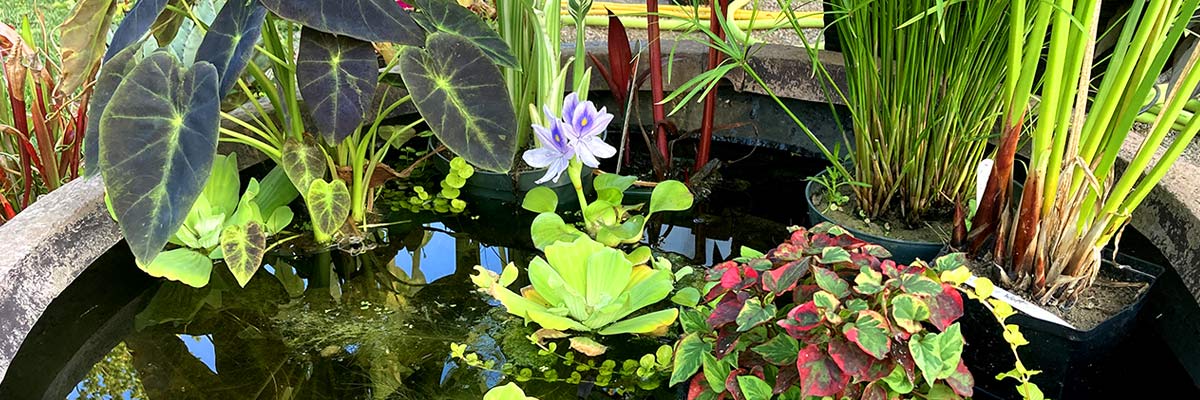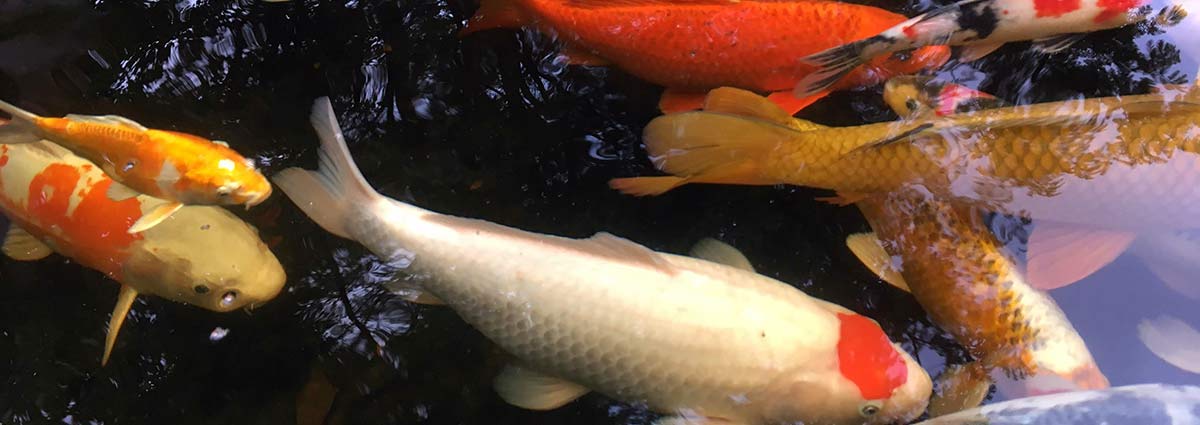Spring is almost here, and that means it’s time to start thinking about opening your pond for another season. With a bit of work now, you can ensure your pond will look its best, with minimal maintenance during the summer. Here are a few tips you can follow to help you get your pond opened properly.

Once your ice has thawed, the first thing to do is to do a proper pond cleaning. During autumn, if you did not cover the pond with a leaf net, a lot of leaves and debris may have fallen into the pond and slowly decomposed over the winter forming a heavy sludge on the bottom. Pond vacuums work great for this job and make pond cleaning much easier. It is necessary to remove as much of this sludge and debris as possible. If you have a small pond with no fish you may want to completely drain the pond, rinse it out and refill it. Remember not to use soap or any harsh chemicals.
If you kept your pond clean and free from leaves last fall, you should install the pump and filter as soon as possible to get the water circulating and filtering. If your pond is really dirty, it might be better to clean it before starting the filtration system to prevent it from clogging too often. Your pump should match the size of the pond, meaning, it should pump the volume of your pond every 1-2 hours to provide adequate circulation and aeration. If you are keeping goldfish or koi, a biofilter is essential to maintain proper water quality. Bigger is always better when it comes to pumps and filters. Larger filters require less cleaning which means less work for you, and healthier water for the fish. Spring is the time to start seeding your biological filter with cold water beneficial bacteria, these are available in powder or liquid form and will kick-start your filter and help improve water quality greatly. Regular additions of sludge reducing bacteria will also help to break down sludge and organic matter in the pond.

Remove marginal plants and water lilies and clean them up by removing all of the dead growth, and if necessary dividing and re-potting them. This is also a great time to fertilize plants with a aquatic plant fertilizer to give them a boost heading into the growing season. This should be done as quickly as possible in a shady area to prevent plants from drying out too quickly. Once the plants are cleaned and fertilized, place them back into the pond, and refill the pond. Remember, it is very important to use a de-chlorinator and chloramine remover any time you add water to the pond, unless you are on well water.

In ponds containing fish, it is not recommended to drain the pond completely. Use a large, long handled net to remove as much of the debris from the bottom as possible. Try not to stir the pond up too much or handle the fish as this can stress them, they are quite vulnerable early in the spring after a long winter of dormancy. It is best to wait until the water temperature reaches 60° before attempting to clean to allow the fishes’ immune system to become active again. It is also a good idea to perform a partial water change, approximately 25% of the pond volume.
Now that the pond cleaning is done, the hard work is over and you can turn your attention to your fish. If you over wintered the fish in the pond, try to get a good look at them and check for any signs of disease. Signs to watch for are ragged or split fins and tails, open sores or red patches of skin, lifted scales etc. Fish are most vulnerable to disease after a long winter of dormancy because their immune systems are weak. If you see any signs of disease treat immediately with the proper medication (treatments are more effective if administered as soon as possible). The best time to inspect your fish is at feeding time while they ate at the surface, which brings us to a very important point – a fish’s metabolism is directly related to water temperature, which means that when the temperature increases, their metabolic rate increases and they require more food and vice versa. DO NOT feed your fish until the water temperature is at or above 48°F / 9°C. Fish are unable to digest food below this temperature, although they may still want to eat. At temperatures between 48-55° F fish should be fed a wheat germ food once a weak, as wheat germ is easily digested. At temperatures 56-60°F you can feed them once a day with wheat germ food, and at temperature above 60° F you can feed them twice a day and begin to gradually convert them on to a quality staple food. As the summer approaches you may wish to gradually increase the feedings up to four times a day and feed a high protein food to increase their growth.
Maintaining optimal water quality is the key to keeping healthy fish, when water quality is poor, fish will inevitably get sick. Regular water testing with a good quality test kit is the only way to be sure of the water condition. The most important parameters to check are pH, ammonia, nitrite and nitrate, especially in the spring. If ammonia or nitrite levels test high, then a partial water change (approximately 25-30%) should be done, and may need to be repeated a few times. Continue testing the water and add some beneficial bacteria to help kick start your biological filter.
Plants not only make your pond look more natural and aesthetically pleasing, they also serve a many other important purposes. Plants help to control algae and improve water quality by consuming nutrients from the water, they also help moderate the water temperature by providing shade, and they provide terrific hiding places for baby fish. By incorporating plants you can reduce chemical use, achieve a natural balance in the pond, and providing a healthy environment for all of the pond inhabitants. Here are a few tips that will help you achieve a healthy balance.